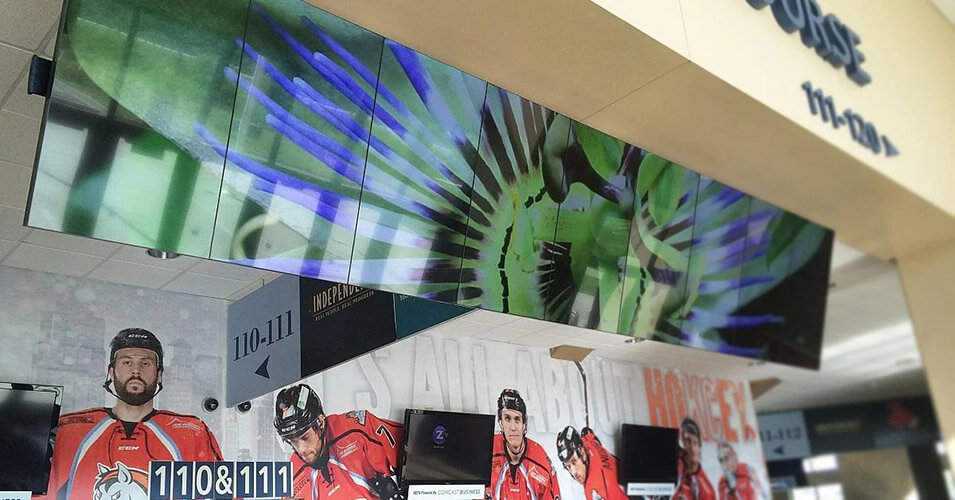Video Wall Deployments – Using Commercial Displays vs. Consumer TVs
The Leading Provider of AV as a Service (AVaaS)

Video wall solutions are usually associated with big enterprises and high expenses. But now it has come a time when flexibility in a solution plays a huge role in getting the best out of your video wall, and that includes displays too.
We often get asked about using inexpensive consumer-grade TVs for video walls. The Userful video-wall product is one of the few cost-effective options that supports using any display (or a mix of displays) to create a video wall. So the question naturally arises: when can you safely take advantage of the substantial cost savings of using consumer TVs versus commercial displays for your video wall?
What's the best display option for your video wall?
Professional-grade digital signage displays—with higher-resolution, low or zero bezel, longer lifecycle, etc.—definitely provides a greater impact on audiences, with greater brightness, longer live and a better warranty, but they cost 3x to 5x more than what 55” consumer TV costs nowadays.
In some situations the extra cost is warranted, but it’s a worthwhile question: when can we safely take advantage of consumer TVs for video walls and when is it worth paying the extra, upfront cost for commercial-grade displays?
Commercial displays would be the better option when:
1. It is deployed to a large number of locations where the onsite warranty offered will be a significant, logistical advantage.
2. Very-thin to zero bezel is needed for seamless alignment and more streamlined look.
3. Implementing artistic, or mosaic-style, video walls (see an example here) where the displays will have all sorts of orientations, and Consumer TVs are not designed for orientations other .
4. There are environmental challenges such as high heat/cold, grease, dust, vibration, or corrosion. Commercial-grade displays have hardware/enclosures designed for heavy-duty usage.
5. Located in unsupervised areas where advance features—such as disabling the IR remote control—is needed.
6. Usage is critical and relies on long lifespan and a solid on-site warranty that covers extended running times—usually 16-24 hours a day.
TVs may be a cost-saving option when:
7. The immediate environment is under daily supervision by your staff, to prevent tampering with it.
8. It does not run 24/7 (e.g., it only runs during business hours).
9. Regular-size bezels are an option for you—as opposed to the specialized ultra low-bezel or “zero bezel” displays.
10. Your video wall size or enclosure won't create extra heat challenges (i.e. if your video wall recesses into a tight space with poor air circulation and/or it has many rows where the cumulative rising from displays below can significantly overheat the upper rows).
11. You do not need RS-232 control—a feature not available in many consumer grade TVs.
12. The cost savings are significant enough to justify potentially decreased lifespan, and the less “solid” warranty is not an issue.
13. The TV unit had advanced testing to ensure compatibility with mounting hardware, endpoint device, and video wall software.
14. It is tied into a system that gives you centralized power-off controls, settings, bezel correction, etc.
A consumer TVs will never replace a higher-quality commercial-grade display in providing the high impact that audiences nowadays demand, and for video walls a professional display with ultra-low or zero bezel will definitely provide you with the better option. A consumer TV and lower-grade display will make sense for digital signage, with stand-alone displays, where screen integration is not necessary.
Userful
The Leading Provider of AV as a Service (AVaaS)